Welcome to a world where vibrant style meets sustainable living! Whether you’re taking your first steps into the world of interior design or you’re a seasoned decorator looking to infuse new life into your space, our guide, “5 Vibrant Sustainable Home Decor Ideas,” is crafted just for you. Here, we celebrate the joy of transformation, where each thoughtful choice contributes not just to the beauty of your home but also to the health of our planet.
In this guide, you’ll discover how to effortlessly marry aesthetics with eco-consciousness, transforming your home into a haven of color and sustainability. Our carefully curated ideas promise to inspire and empower you, blending creativity with practicality to deliver both flair and functionality. With these techniques, you’ll not only boost the visual appeal of your living spaces but also feel the deep satisfaction that comes from making choices that are kind to our environment.
Dive in and feel the excitement of seeing your home evolve into a masterpiece of vibrant, sustainable design. As you explore, you’ll gain the confidence that these ideas can easily be embraced, regardless of your current decorating prowess. Let’s embark on this rewarding journey together, where every step is a stride towards a more beautiful, sustainable future!
Incorporate Upcycled Statement Pieces
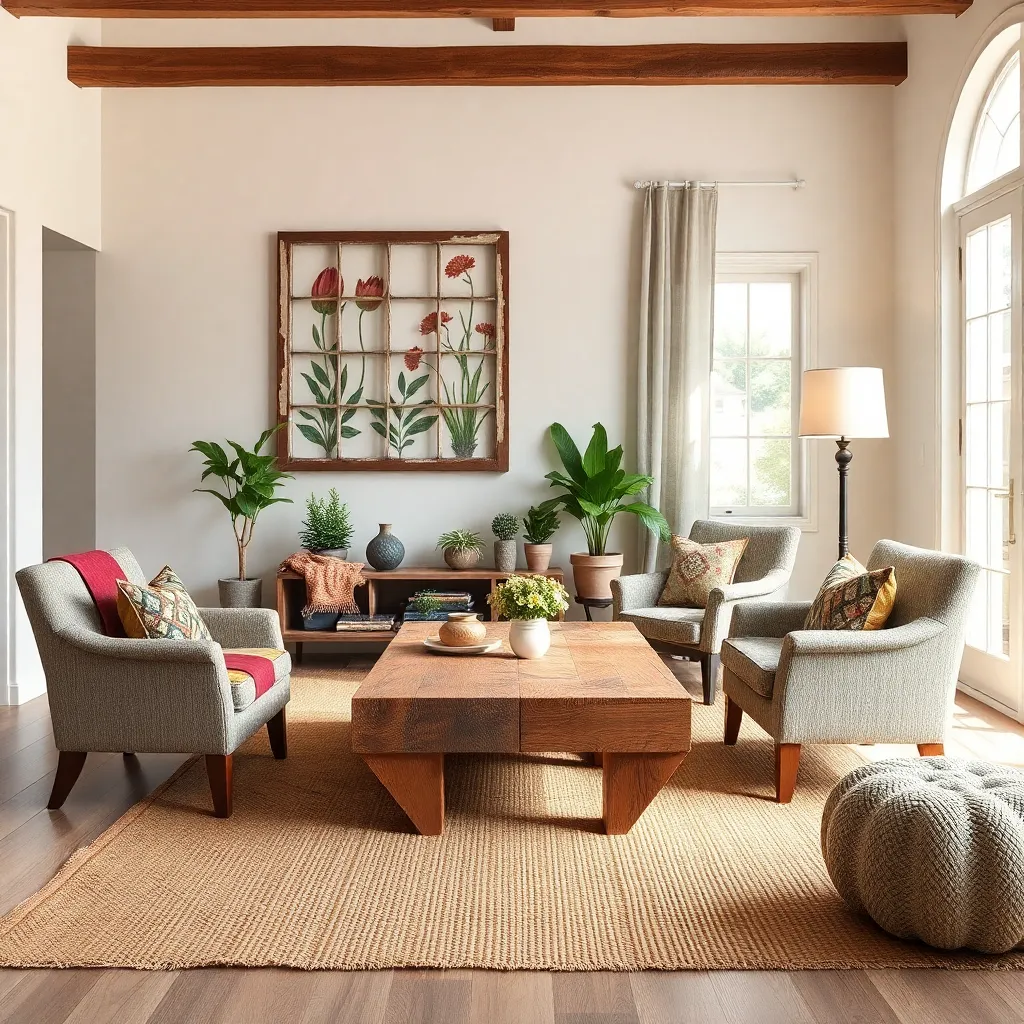
Incorporating upcycled statement pieces into your home decor not only makes for a unique aesthetic but also supports sustainability. Start by hunting for pieces with potential at thrift stores, flea markets, or even your attic, focusing on items that have a distinct shape or interesting details that can be enhanced with a fresh coat of paint or new upholstery.
An effective way to integrate upcycled furniture is by using them as focal points in your rooms. For instance, a brightly painted vintage sideboard can add a splash of color to a neutral living room, while a refurbished dining table with mismatched chairs offers an eclectic, inviting touch to your dining area.
For beginners, consider starting small with items like picture frames or lamps, which can be easily transformed with paint or new lampshades. Advanced decorators might try their hand at reupholstering a chair or sofa, selecting durable fabric in lively patterns that contrast with the piece’s original style for a bold statement.
Placement plays a crucial role in showcasing upcycled pieces. Position them strategically where they can draw attention, such as a reimagined coffee table in the center of your living room or a unique headboard made from reclaimed wood in your bedroom.
Choose Eco-Friendly Paint Colors
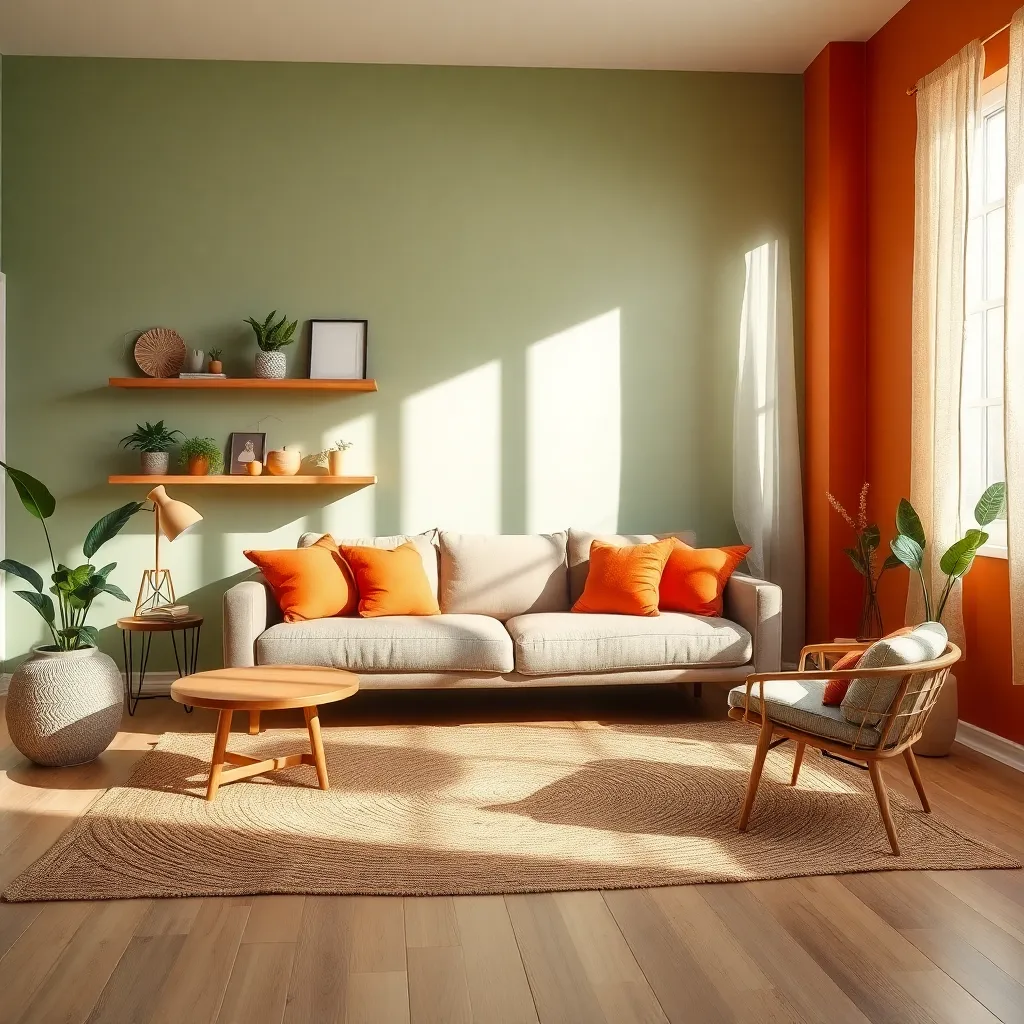
Choosing eco-friendly paint colors can dramatically transform your home while minimizing environmental impact. Begin by selecting paints with low or zero volatile organic compounds (VOCs) to ensure a healthier indoor air quality.
Opt for hues that reflect natural elements, such as soft greens, earthy browns, or ocean blues, which can create a serene ambiance. These colors not only enhance the aesthetic appeal but also promote a sense of calm and relaxation in any room.
To achieve a cohesive look, pair these colors with sustainable furniture pieces. For example, use reclaimed wood furniture to complement a soft green wall, creating a harmonious and eco-conscious space.
Advanced decorators might experiment with color blocking using different shades of the same eco-friendly palette. This technique adds depth and interest to your space, making it visually appealing without overwhelming the senses.
Use Reclaimed Wood Accents
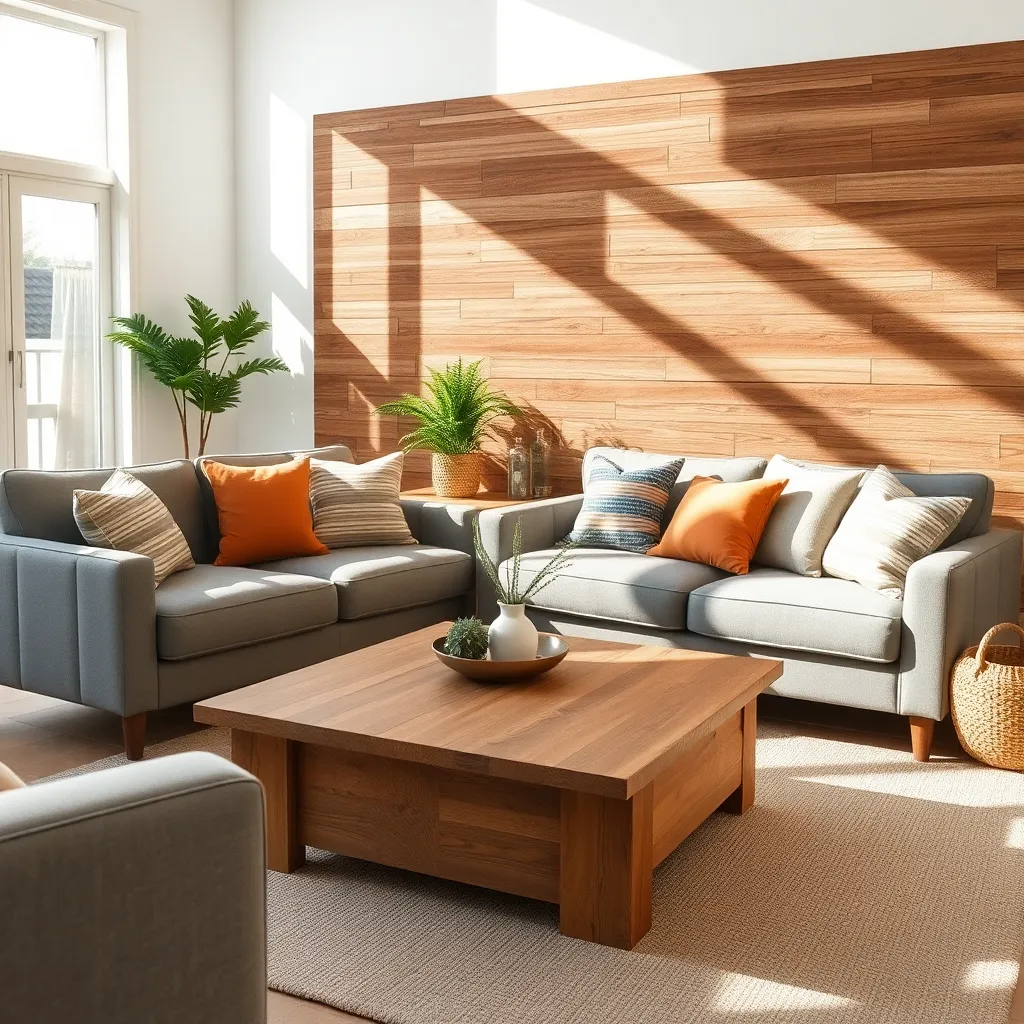
Reclaimed wood accents are a wonderful way to infuse your home with both character and sustainability. Start by incorporating a reclaimed wood coffee table or sideboard to add a rustic touch to your living room while being eco-conscious.
Utilize reclaimed wood for shelving to create a unique display area. Whether in the kitchen or living room, these shelves can showcase potted plants, books, and decorative items while highlighting the wood’s natural history.
Consider using reclaimed wood planks as a feature wall to give any room an instant focal point. This technique not only adds warmth and texture but also pairs well with neutral or bold color schemes, depending on your preference.
For advanced decorators, think about integrating reclaimed wood into unexpected places, such as a bathroom vanity or headboard for the bedroom. These choices can transform ordinary rooms into unique spaces that tell a story, offering a distinct blend of modern aesthetics with historical charm.
Opt for Organic Textiles
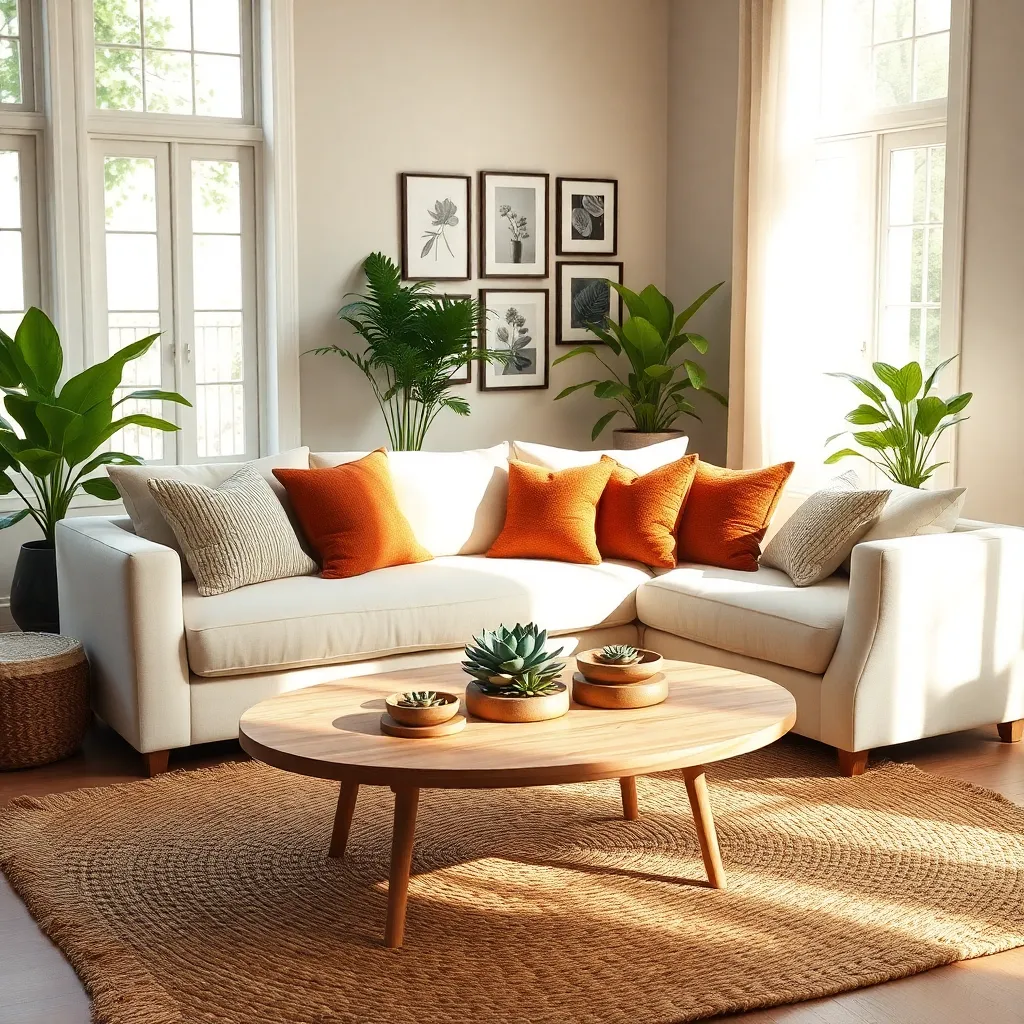
To create a vibrant and sustainable home, consider incorporating organic textiles into your décor. These materials not only enhance the aesthetic appeal of your space but also promote a healthier environment by reducing exposure to synthetic chemicals.
Begin by selecting natural fibers like cotton, linen, or wool for your curtains, upholstery, and bedding. These materials are not only eco-friendly but also offer a variety of textures and patterns that can add depth and warmth to any room.
For a cohesive and stylish look, choose textiles in complementary colors that align with your existing décor. A palette of earth tones or soft pastels can create a serene atmosphere, while bolder colors can inject energy and personality into the space.
Advanced decorators can experiment with layering different fabrics to add interest and dimension. Mixing and matching patterns, such as pairing a striped throw with a floral cushion, can create a dynamic and inviting setting that reflects your personal style.
Display Indoor Plant Arrangements
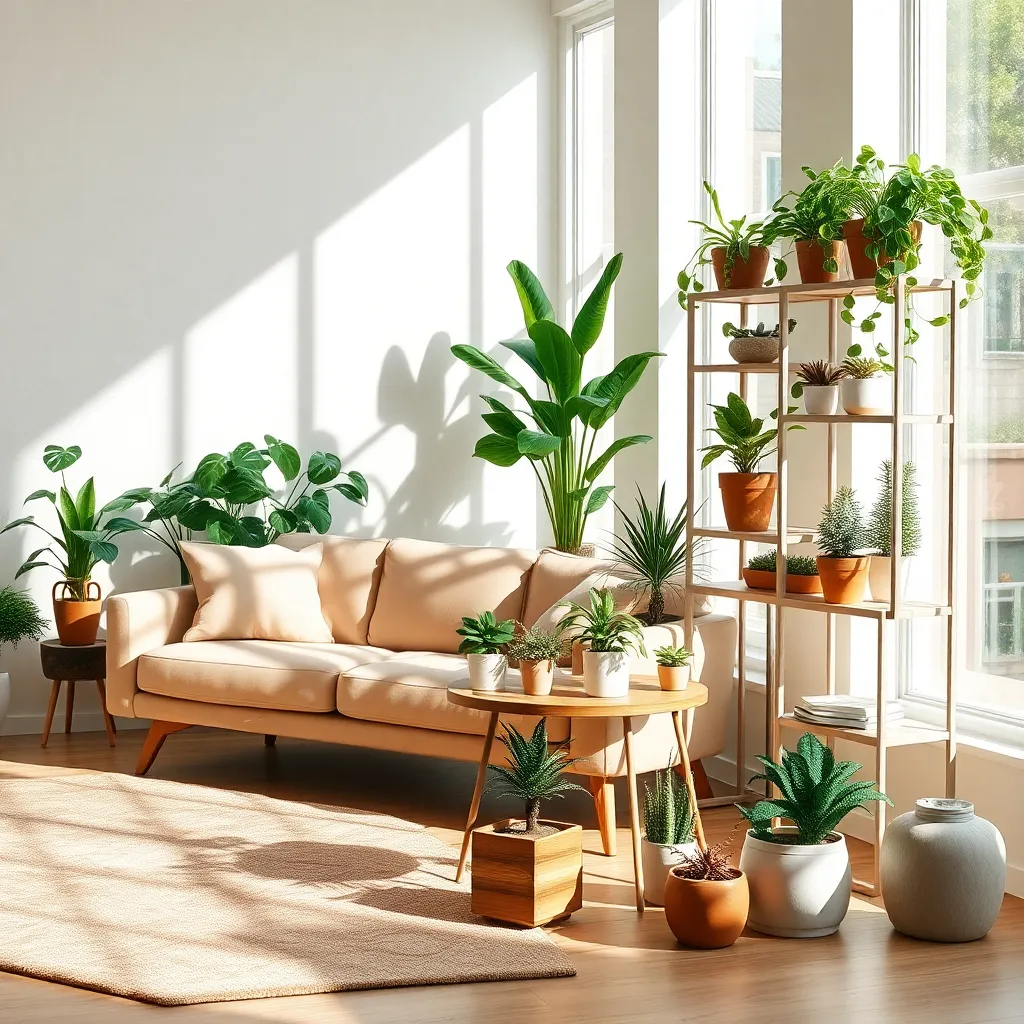
Utilizing indoor plant arrangements is a fantastic way to add vibrancy and sustainability to your home. Start by choosing a variety of plant types, such as ferns, succulents, and flowering plants, to create a balanced and dynamic display.
Positioning your plants is crucial to their health and aesthetic appeal. Place taller plants like fiddle leaf figs in corners to draw the eye upward, while smaller plants can be grouped on shelves or coffee tables for an intimate touch.
Consider color and texture when arranging plants to complement the existing decor. For example, pairing deep green foliage with terracotta pots can enhance earthy color schemes, while white or metallic pots provide a modern contrast.
For an advanced touch, integrate vertical gardening techniques. Install wall-mounted planters or hanging baskets to maximize space and create a lush, living wall effect that doubles as art.
Conclusion: Growing Success with These Plants
In exploring the vibrant world of sustainable home decor, we’ve uncovered five key concepts that beautifully parallel the nurturing of relationships. Firstly, embracing natural elements reminds us to foster authenticity and transparency. Secondly, upcycling teaches us the power of renewal and second chances. Thirdly, incorporating multifunctional pieces highlights the importance of adaptability and compromise. Fourthly, supporting local artisans emphasizes the value of building strong community ties. Lastly, choosing timeless designs mirrors the commitment to longevity and resilience in our bonds.
As you reflect on these decor ideas, consider starting with one small change in your home or relationship this week—perhaps introducing a natural element or renewing a forgotten connection. This small step can be the catalyst for deeper transformation.
Remember to save this article as a handy reference; it’s a guide to nurturing both your living space and your relationships. By applying these concepts, you’re not just decorating a home but crafting a vibrant, sustainable future for your relationships. Embrace these ideas, and watch your connections flourish, growing stronger and more resilient, now and in the years to come.
